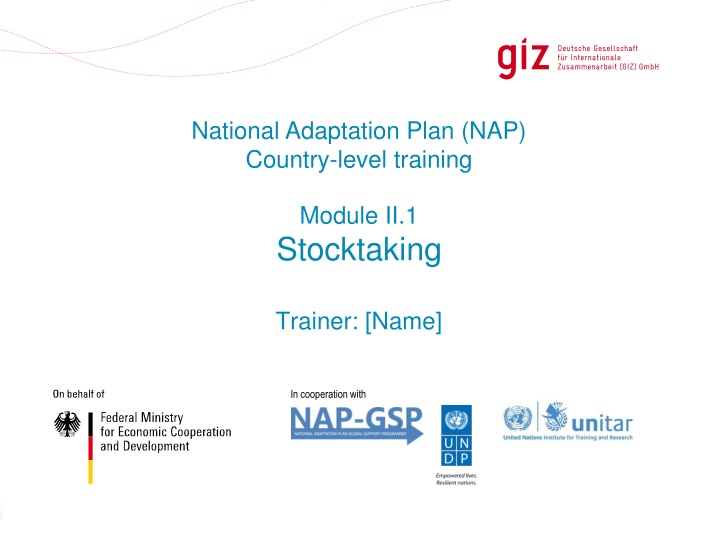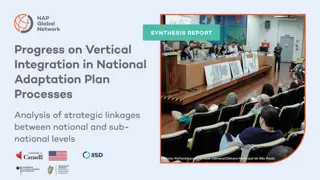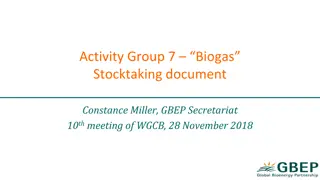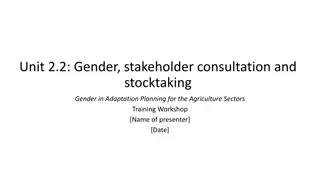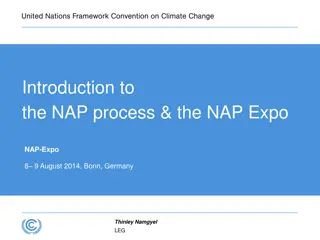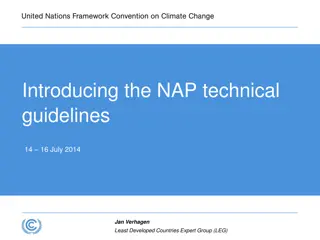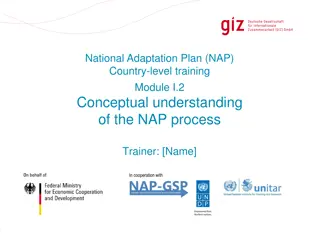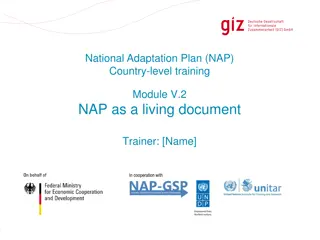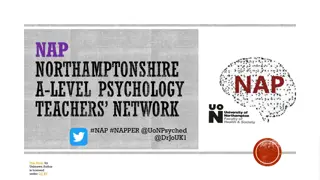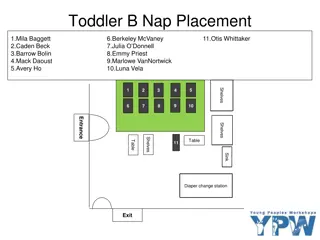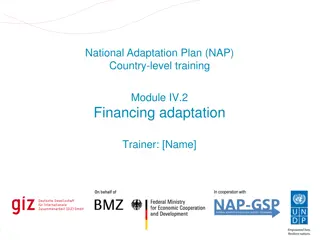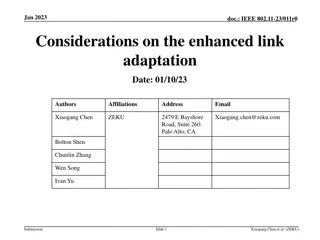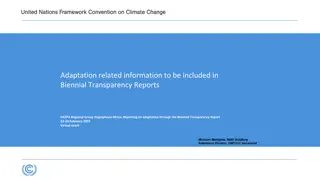National Adaptation Plan (NAP) Stocktaking Training Overview
This training module provides insights into the importance of stocktaking in the National Adaptation Plan (NAP) process. Participants will learn about different stocktaking methods, utilizing stocktaking results for NAP development, and identifying gaps and needs. The session covers subjects like policy framework, adaptation initiatives, and available resources. It emphasizes the significance of existing work in saving resources and enhancing planning capacities for effective adaptation.
Download Presentation

Please find below an Image/Link to download the presentation.
The content on the website is provided AS IS for your information and personal use only. It may not be sold, licensed, or shared on other websites without obtaining consent from the author.If you encounter any issues during the download, it is possible that the publisher has removed the file from their server.
You are allowed to download the files provided on this website for personal or commercial use, subject to the condition that they are used lawfully. All files are the property of their respective owners.
The content on the website is provided AS IS for your information and personal use only. It may not be sold, licensed, or shared on other websites without obtaining consent from the author.
E N D
Presentation Transcript
National Adaptation Plan (NAP) Country-level training Module II.1 Stocktaking Trainer: [Name] In cooperation with Slide 1
Overview of this module Relevance of stocktaking Using the stocktaking results for the NAP process Subjects of stocktaking Stocktaking methods Examples of stocktaking Prepare a stocktaking Slide 2
What can you expect to learn from this session? Get to know different methods for stocktaking Learn how to use the results of stocktaking exercises for developing the NAP process Reflect on planning capacities in your country Slide 3
Relevance of stocktaking The NAP process is a complex task Making use of already existing work saves resources Stocktaking identifies existing building blocks: Identify and assess the nature and scope of adaptation planning Identify vulnerabilities Identify entry points Identify the point of departure for the country's NAP process Slide 4
Using the stocktaking results for the NAP process Stocktaking provide overviews and help to identify gaps and needs: Understand relevant actors and their roles better Show existing adaptation initiatives and their potential Determine capacity levels for effective adaptation Provide an overview of existing data and information Current situation How to go from here to there? (Roadmap) Intended state Slide 5
Subjects of stocktaking Policy and planning framework for adaptation Capacities for planning and implementing Institutions and stakeholders Adaptation initiatives and adaptation measures Availability and accessibility of climate and vulnerability data Availability and accessibility of resources and funds Slide 6
Stocktaking methods Desk studies Literature reviews Analysis of grey literature Surveys with questionnaires Individual interviews with experts (e.g. NAP Align) Stakeholder or expert workshops (e.g. SNAP) Combined methods, e.g. desk studies and interviews / focus group discussions Resources needed differ depending on method! Slide 7
Examples of stocktaking: adaptation measures, Mexico Slide 8
Examples of stocktaking: Niger A. Laying the groundwork and addressing gaps NAP process not yet launched Coordination and ownership needs Lack of climate change scenarios Monitoring system Knowledge capitalization Capacity development B. Preparatory Elements Coordination and ownership needs Lack of climate change scenarios Monitoring system Lack of technical skills/expertise C. Implementation Strategies Coordination and ownership Monitoring system Knowledge capitalization D. Reporting, Monitoring and Review Coordination and communication needs Monitoring system Knowledge capitalization Slide 9
Prepare a stocktaking Purpose: What is the purpose and subject of the stocktaking? What do you expect to learn from it? Data collection: What are possible sources of information? How to collect the information? Resources: Is it achievable in the given time frame and with the available resources? Evaluation and documentation: How should the data be evaluated, documented and made available? (e.g. reports) Visualization: How should the results presented in a (visually) appealing manner to politicians and other decision-makers? (e.g. diagrams) Slide 11
Exercise step A: short version of the Stocktaking for National Adaptation Planning (SNAP) tool Matrix II.1.1 provides an excerpt of the 21 test questions of the SNAP tool. You are invited to rank each test question for your own country situation. Please, also mention an example for each line justifying your ranking. Work in sub-groups and write down your results on cards provided Slide 12
Exercise step B: Strengths, weaknesses, opportunities and threats (SWOT) for the further NAP country process The moderator jointly with you will deduct findings of key importance for the further NAP process and condense them to strengths, weaknesses, opportunities and threats along the SWOT scheme in Matrix II.1.2 Slide 13
Imprint Published by Deutsche Gesellschaft f r Internationale Zusammenarbeit (GIZ) GmbH This presentation is part of a NAP country-level training that has been developed by GIZ on behalf of BMZ and in cooperation with the NAP Global Support Programme (NAP-GSP), in particular UNDP and UNITAR. Climate Policy Support Project Dag-Hammarskj ld-Weg 1-5 65760 Eschborn, Germany T +49 61 96 79-0 F +49 61 96 79-1115 The training is designed to support countries in setting up a National Adaptation Plan (NAP) process. It builds on the NAP Technical Guidelines developed by the Least- Developed Countries Expert Group (LEG). Contact E climate@giz.de I www.giz.de/climate You are welcome to use the slides, as long as you do not alter its content or design (including the logos), nor this imprint. If you have any questions regarding the training, please contact Till Below or Nele B nner at GIZ. For questions related to the Technical Guidelines, please refer to the UNFCCC s NAP Support Portal. Responsible Till Below and Nele B nner, GIZ Authors Nele B nner Contributions by Stefanie D mig As a federally owned enterprise, the Deutsche Gesellschaft f r Internationale Zusammenarbeit (GIZ) GmbH supports the German Government in achieving its objectives in the field of international cooperation for sustainable development. GIZ also engages in human resource development, advanced training and dialogue. Slide 14
